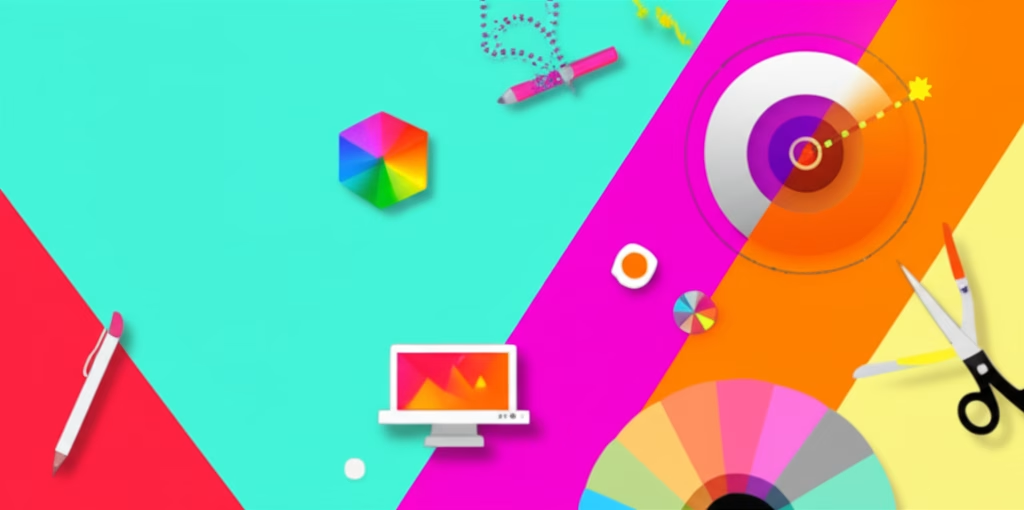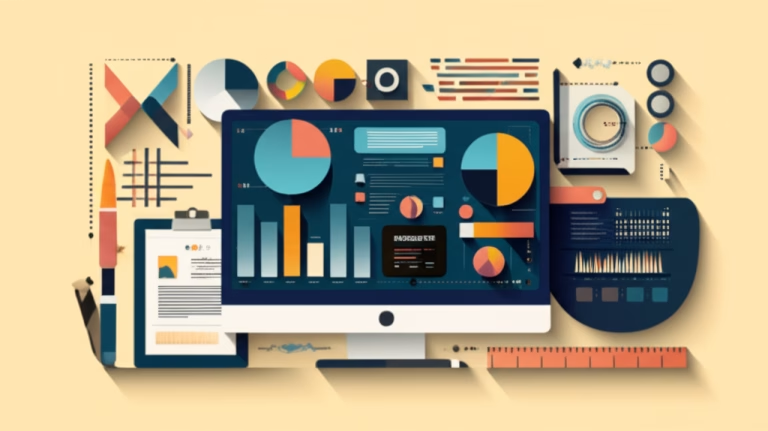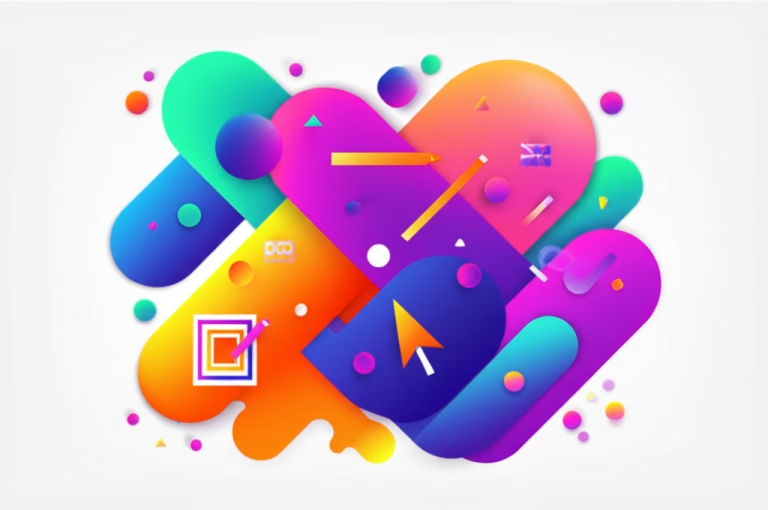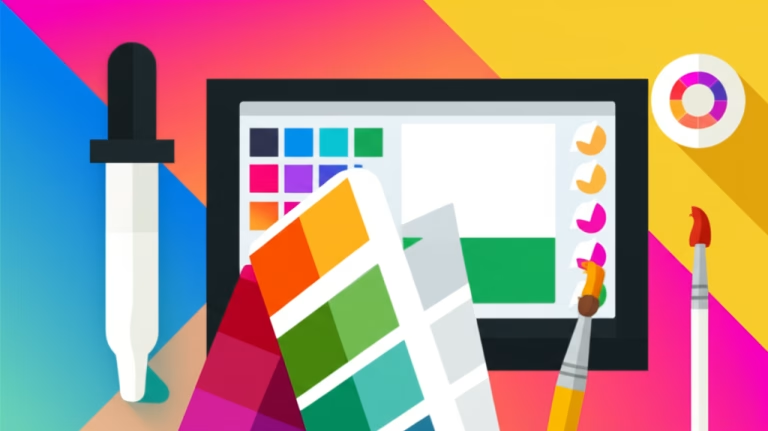Hello there, aspiring designer! Ever feel like the world of graphic design is locked behind complicated software? You’re not alone. Many beginners feel overwhelmed by complex interfaces and endless menus. But what if I told you there are fantastic, easy design tools out there specifically made for you? Tools that let you create beautiful visuals without years of training. This post is your key to unlocking that potential and starting your creative journey with confidence. We’ll explore how these tools work and how you can use them to bring your ideas to life.
Table of Contents
The Challenge Every Designer Faces
Starting out in design can feel like learning a new language. You have amazing ideas, but the tools seem to get in the way. Traditional design software, while powerful, often comes with a steep learning curve. This can be frustrating and even discouraging, making you feel like design is just too hard or not for you. You might spend hours just trying to figure out basic functions instead of actually creating.
This challenge is real for many who are new to the creative world. You want to design social media posts, flyers, or even simple logos, but the thought of wrestling with complex programs stops you. The good news is that the design landscape has changed dramatically. There’s a growing number of beginner design software options designed to remove these barriers and make creation accessible to everyone.
Finding the right starting point is crucial. Picking a tool that matches your current skill level can make all the difference. Instead of feeling defeated, you can experience the joy of seeing your ideas take shape quickly and easily. This article will guide you through understanding what makes tools easy to use and how you can leverage them effectively.
We’ll look at how these easy design tools function and provide practical steps to help you integrate them into your creative process. You don’t need to be a technical expert to start designing. You just need the right tools and a little guidance on how to use them. Get ready to transform your approach to design and start creating visuals you’re proud of.
Overcoming that initial hurdle of tool complexity is the first step towards building your design skills. By focusing on graphic design tools for beginners, you can build confidence and learn the fundamentals of visual communication without getting bogged down in technical details. Let’s dive into how these accessible platforms work and why they are perfect for someone just starting out.
The Science Behind Easy Design Tools
Modern easy design tools aren’t magic; they’re built on smart design principles focused on user experience. Think about drag-and-drop interfaces. This isn’t just a random feature; it’s a direct response to how beginners intuitively want to interact with visual elements. Instead of complex menus and keyboard shortcuts, you simply grab what you need and place it where you want it. This direct manipulation makes the creative process feel more natural and less like operating complicated machinery.
Templates are another key component. These aren’t just pre-made designs; they are carefully constructed starting points that incorporate good design principles like balance, hierarchy, and color harmony. For a beginner, using a template is like having a seasoned designer give you a head start. You don’t have to build everything from scratch, allowing you to focus on customizing the content and understanding how different elements work together visually.
The underlying science is often rooted in cognitive psychology. These tools reduce cognitive load by simplifying choices and providing visual feedback. When you select an element, you see its properties immediately. When you drag an image, you see it move in real-time. This constant feedback loop helps you understand the impact of your actions and learn more quickly than staring at lines of code or abstract settings.
Furthermore, many simple design programs use intuitive workflows that mirror how someone might think about designing manually. You add text, then add an image, then arrange them. The steps are logical and follow a natural progression, making the software feel less alien and more like a digital canvas. This focus on intuitive interaction is what truly sets these tools apart for beginners.
They prioritize accessibility and ease of use over having every single advanced feature imaginable. This deliberate simplification allows new users to jump in and start creating almost immediately, building confidence and momentum. It’s about empowering creativity by removing technical barriers, making the process of learning to use beginner design software a positive and rewarding experience from day one.
Fundamental Principles
User-Friendly Interfaces: The layout is clean and uncluttered, putting the most common tools front and center. Icons are usually simple and universally recognized, reducing the need to decipher complex symbols. Navigation is straightforward, often with clear labels and logical groupings of features, so you can easily find what you need without searching endlessly through menus. This design philosophy minimizes confusion and allows you to focus on your creative task.
Template Libraries: Providing a wide variety of pre-designed templates for different purposes (social media, presentations, flyers, etc.) is a core principle. These templates serve as excellent starting points, showcasing effective layouts and design combinations. They save significant time and effort, allowing beginners to produce professional-looking results quickly while also learning about good design structure by examining and modifying existing examples.
Intuitive Workflows: The steps to create a design are logical and follow a natural progression. Adding elements, arranging them, and applying edits feels intuitive rather than technical. Actions like resizing, rotating, and aligning objects are typically performed directly on the canvas with visual handles and guides, making the process feel very hands-on and easy to understand. This flow reduces frustration and keeps the creative momentum going.
Accessibility: Many easy design tools are web-based, meaning you can access them from anywhere without needing powerful hardware or complicated installations. They are often designed to be responsive, working well on different screen sizes. This accessibility ensures that more people can start designing, regardless of their technical setup or location, democratizing the ability to create visual content.
Built-in Assets: Providing access to libraries of free or affordable stock photos, icons, fonts, and illustrations is another key principle. This eliminates the need for beginners to search for external resources, which can be time-consuming and confusing regarding licensing. Having everything you need within the tool simplifies the process and encourages experimentation with different visual elements.
Practical Strategies for Using Easy Design Tools
Starting with a template is one of the smartest strategies when using easy design tools. Don’t feel like you’re cheating! Templates are there to help you. Choose one that’s close to what you envision and then simply swap out the text, images, and colors to match your needs. This saves you the effort of setting up the basic layout and structure, letting you focus on personalizing the design.
Another effective strategy is to leverage the pre-made elements available within the tool. Most graphic design tools for beginners offer extensive libraries of icons, illustrations, shapes, and text styles. Instead of trying to create these from scratch, which can be challenging for a beginner, utilize these ready-made assets. They are designed to work well together and can instantly elevate the look of your project.
Focus on mastering one or two tools at a time. It’s tempting to try every new beginner design software you hear about, but this can lead to feeling scattered and not truly learning any of them well. Pick one tool that seems like a good fit for the type of projects you want to create most often and spend time exploring its features and capabilities. Once you feel comfortable, you can always explore others.
Don’t be afraid to experiment. The beauty of easy design tools is that they are forgiving. You can easily undo changes or duplicate your design to try different variations. Play around with different fonts, color palettes, and layouts. This experimentation is a crucial part of the learning process and helps you develop your own design style. There’s no single “right” way to use these tools; find what works best for you.
Utilize the tutorials and resources provided by the tool’s creators. Many simple design programs offer helpful guides, video tutorials, and user communities. These resources are invaluable for learning specific techniques, discovering hidden features, and getting inspiration from others. Taking advantage of these learning materials can significantly speed up your progress and help you get the most out of the software.
- Start with Templates: When you open the tool, browse the template library for a design that fits your project’s purpose (e.g., Instagram post, flyer). Select it and begin customizing the content.
- Utilize Pre-made Assets: Explore the elements library for icons, shapes, and images. Drag and drop them into your design. Use the search function to find specific types of assets quickly.
- Focus on Content First: Once you have a template or basic layout, add your text and images before spending too much time on intricate design details. This ensures your message is clear from the start.
- Experiment with Color and Font: Use the color picker to change element colors and browse the font library to find suitable typography. Don’t be afraid to try different combinations to see what looks best.
- Save and Iterate: Regularly save your work. Don’t be afraid to create multiple versions of a design to compare different approaches. This helps you refine your ideas and learn what works visually.
Real Cases: When Choosing the Wrong Tool Goes Wrong
Choosing the wrong tool when you’re starting out can be a major setback. It’s like trying to learn to drive in a Formula 1 race car – powerful, but completely overwhelming for a beginner. Many aspiring designers get discouraged because they jump straight into complex, industry-standard software that requires significant technical knowledge and training. This often leads to frustration and the feeling that design is too difficult to learn.
One common mistake is assuming that the most powerful software is always the best. While professional tools offer incredible capabilities, they are built for experienced users with specific workflows. A beginner trying to navigate these complex interfaces can easily get lost, waste time searching for simple functions, and feel inadequate when they can’t achieve basic tasks that seem easy in tutorials designed for advanced users.
Another pitfall is getting sidetracked by features you don’t need. Complex software often has a vast array of tools and options, many of which are irrelevant to a beginner’s needs. This can be distracting and make the learning process feel much more complicated than it needs to be. You might spend time trying to understand advanced features instead of focusing on the core principles of design and how to apply them using simpler tools.
Ultimately, choosing an overly complex tool can stifle creativity. When you’re constantly battling with the software, you have less mental energy to focus on the creative aspects of your project – the layout, the color choices, the message. Easy design tools, by contrast, free you up to think creatively because the technical barriers are significantly lower. Learning from these real-world scenarios highlights the importance of starting with beginner design software that supports your learning journey.
It’s important to recognize that the goal is to design, not just to master complex software. By selecting simple design programs that are intuitive and accessible, you empower yourself to start creating immediately, building confidence and practical skills. This foundational experience with user-friendly tools will actually make it easier to learn more advanced software later on, should you choose to do so, because you’ll already understand the core concepts of design application.
Case 1: Trying to Use Professional Software Without Training
Problem: A new blogger wanted to create custom graphics for their website and social media. Seeing that professional designers used Adobe Photoshop, they downloaded it, assuming it was the standard. They quickly became overwhelmed by the interface, the multitude of tools, and the complex layers panel. Simple tasks like adding text or resizing an image felt incredibly difficult, and they spent hours watching tutorials that still felt too advanced.
Lesson: Professional software like Photoshop is powerful but requires dedicated learning. For beginners, starting with a tool designed for ease of use, like a web-based graphic design platform with templates, would have been a much more effective starting point. It’s crucial to match the tool’s complexity to your current skill level to avoid frustration and make the learning process enjoyable.
Case 2: Getting Lost in Too Many Features
Problem: An aspiring small business owner wanted to design their own marketing materials. They chose a popular, feature-rich design program that boasted extensive capabilities. However, they found themselves constantly distracted by the sheer number of options. They would spend excessive time exploring every filter, effect, and setting, losing focus on the actual design goals and ending up with inconsistent or overly complicated visuals.
Lesson: More features don’t always mean better for a beginner. A tool with a curated set of essential features relevant to common design tasks can be much more effective. Simple design programs help beginners focus on the core elements of design without getting lost in advanced functionalities they don’t yet need, leading to clearer and more purposeful creations.
Your Action Plan for Mastering Easy Design Tools
Ready to start your design journey? The best way to master easy design tools is by diving in and creating. Don’t wait until you feel perfectly ready; start today! Every small project you complete will build your skills and confidence. Here is a simple action plan to help you get started and make consistent progress in using beginner design software effectively.
Think of this as a roadmap. It’s designed to help you take manageable steps that build upon each other. You don’t need to learn everything at once. By breaking down the process into smaller actions, you can avoid feeling overwhelmed and celebrate your progress along the way. Using graphic design tools for beginners is all about consistent practice and applying what you learn to real projects.
This plan encourages hands-on learning. Reading about design is helpful, but actually using the tools is where the real understanding happens. Each step is designed to get you actively creating, experimenting, and becoming more comfortable with your chosen easy design tools. Remember, every designer started somewhere, and taking consistent action is key to developing your abilities.
By following this action plan, you’ll not only learn how to use the software but also begin to understand fundamental design principles through practical application. This combination of tool proficiency and design knowledge is what will allow you to create truly impactful visuals. So, let’s look at the steps you can take, starting right now, to make the most of simple design programs.
Commit to this plan and watch your design skills grow. It’s about building a habit of creating and learning. Don’t worry about making mistakes; they are part of the process. Focus on completing the actions and learning from each project. Your journey to mastering easy design tools begins with taking that first deliberate step today.
- Today: Choose Your First Tool and Complete a Simple Task: Select one easy design tool that seems appealing. Sign up or open the software and complete a very basic task, like creating a social media post using a template and adding your own text and image. Focus on navigating the interface and saving your work.
- This Week: Complete Your First Small Project: Choose a slightly more involved project, like designing a simple flyer for a fictional event or creating a header for a blog post. Experiment with changing colors, fonts, and adding a few different elements from the library. Aim to complete the project and download it.
- This Month: Explore More Features and Try a New Template: Dedicate time to exploring features beyond the basics. Try using different template categories, experimenting with alignment tools, or adding simple effects if available. Complete a project using a template type you haven’t tried before to broaden your skills.
- Next 3 Months: Undertake a Personal Project and Seek Feedback: Challenge yourself with a personal project that requires a bit more effort, like designing a simple multi-page document or a series of social media graphics with a consistent theme. Share your work with a friend or online community for constructive feedback and use it to improve your skills.
Clear Your Doubts about Easy Design Tools
It’s natural to have questions when you’re starting something new, especially with technology. Many beginners wonder about the technical side of easy design tools or how they can be used for specific purposes. Let’s address some common doubts to help you feel more confident as you begin your design journey with beginner design software. Knowing the answers to these questions can smooth out your learning process.
Having clarity on these points can prevent unnecessary worry and allow you to focus on the creative aspects of using graphic design tools for beginners. These platforms are designed to be accessible, but understanding their capabilities and limitations is helpful. Don’s hesitate to seek out answers to any other questions you might have as you explore these simple design programs.
Remember that the goal is to make design accessible. The developers of easy design tools have worked hard to simplify the technical complexities. The answers to these questions reflect that effort, showing how these tools are built to support beginners. Let’s look at some common inquiries and provide straightforward answers to help clear your mind and encourage you to start creating.
Addressing these practical concerns upfront can make the idea of diving into design feel less daunting. It’s about demystifying the process and showing that using beginner design software is well within your reach. If you have a question, chances are other beginners do too. Seeking out answers is a sign of a proactive learner, and it will help you progress more quickly.
These tools are built with accessibility in mind, and that includes making information about them easy to find. Don’t be afraid to explore the tool’s help section or search online for answers to specific questions. The design community is generally very supportive of beginners. Let’s tackle some common questions you might have about using easy design tools effectively.
Q: Do I need a powerful computer to use easy design tools?
A: Most easy design tools are web-based, meaning they run in your internet browser and don’t require a very powerful computer. A stable internet connection is usually more important than high-end hardware.
Q: Can I create professional-looking designs with beginner software?
A: Absolutely! While they might lack some advanced features of professional software, beginner design software provides templates and tools that allow you to create high-quality visuals suitable for social media, simple marketing materials, and personal projects.
Q: Are there free easy design tools available?
A: Yes, many popular easy design tools offer free versions with plenty of features to get started. These free plans are often more than enough for beginners to learn the basics and create various designs.
The Next Step in Your Journey
You’ve taken a fantastic step by learning about easy design tools and how they can make design accessible to everyone. This is just the beginning of your creative adventure! Mastering these tools is an ongoing process, a journey of exploration and practice. Every design you create, no matter how simple, builds your skills and confidence. Embrace the learning process and enjoy seeing your ideas come to life visually.
Remember, design is a skill that develops over time with consistent effort. Beginner design software provides an excellent foundation, allowing you to focus on applying design principles without getting bogged down in technical complexities. As you become more comfortable, you’ll naturally start to explore more advanced techniques and potentially even more powerful tools.
Keep creating, keep experimenting, and keep learning. The world of design is vast and exciting, and these graphic design tools for beginners are your friendly entry point. Don’t be afraid to try new things or make mistakes; they are all part of the growth process. Celebrate your successes and learn from the challenges.
Your journey in design is unique. Use these simple design programs to express your creativity, communicate your ideas, and build your visual skills. The most important thing is to keep practicing and to enjoy the process of bringing your visions to reality. The more you use the tools, the more intuitive they will become.
As you continue to evolve, you might find yourself curious about the foundational concepts that make designs truly effective. Understanding principles like color theory, typography, and layout can significantly enhance your work, even when using easy design tools. This knowledge complements your tool skills and helps you make more intentional design choices.
Continue evolving with our guide about Design Fundamentals!



